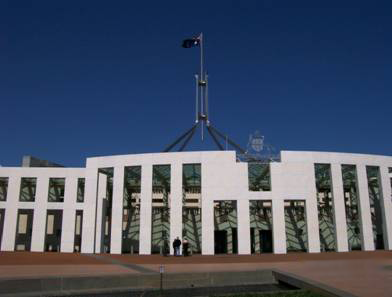Support from Labor, the Greens and Jacqui Lambie
Vote tied 34 Ayes, 34 Noes, amendment lost
In December 2019, the Morrison government introduced an uncontroversial Bill transferring further powers to the Aged Care Quality and Safety Commission in accord with recommendations of the 2017 Carnell-Paterson report and with Labor support. In the Senate, the Greens and the Centre Alliance sought to introduce amendments to increase transparency. The Greens were focused on the complaints system and on access for residents’ advocates. The amendments were lost, opposed by the government and by Labor. The Centre Alliance was focused on staffing ratios and on financial reporting. The staffing amendment was lost due to government and Labor opposition but the vote on the financial reporting proposal was tantalising: 34 Ayes and 34 Noes.
““My office has heard firsthand accounts from people who work with and for aged care providers highlighting that dodgy financial decisions and profiteering takes place. For instance, there is a 100 bed provider that has made $2.5 million in profit three years running, but this profit is only shown as $500,000… because they pay $2 million in rent to the parent company which already owns the building. … there is a 50 bed not-for-profit facility where the salaries of three managers exceeded $500,000 at a time when the home could not meet basic minimum standards and was also…sanctioned. And there are other providers using subsidies to help send senior staff to overseas award ceremonies and lavish conferences”
S. Griff, Senate, Hansard, 5 December 2019:3 “

Senator for South Australia
Centre Alliance
Proposal: mandatory annual financial reports to be made public
The Centre Alliance wanted providers to have to submit annual financial reports to the Commission which would have to make them public. The reports were to include:
- total income and sources of that income;
- total expenditure with breakdown of expenditure on (i) food and food supplements; (ii) medical products; (iii) continence aids;
- total expenditure on staffing with breakdown by category (RN, EN, PCA allied health etc.);
- total expenditure on staff training;
- total other operational expenditure;
- any amount paid to a related body corporate within the meaning of the Corporations Act 2011
The vote on this amendment was tied which meant it was lost. It was supported by Labor, the Greens and Jacqui Lambie. It was opposed by the government (Liberal and National) and by Cory Bernadi and Pauline Hanson (Senate, Hansard, 5 December 2019: 10-14). Even if successful, the amendment would then have to be passed by the House of Representatives to become law. It did not see the light of day there. The government’s legislation flashed through the House on the final sitting day of the year and was carried on the voices (House of Representatives, Hansard, 5 December 2019: 82-84).
The percentage of government subsidy used for nursing and personal care
If these financial reports had become mandatory we would know the division between wages and profits for each of the companies and organisations relying on government subsidies to deliver residential care. Prior to the Aged Care Act there was some knowledge: the percentage of government subsidy allocated for nursing and personal care was known because it was mandated (CAM/SAM funding system). This quarantined funding disappeared with the new funding system (RCS and later ACFI).
Will the Royal Commission seek evidence on the current position?
In evidence before the Royal Commission, a nurses’ union official claimed that the proportion of provider income allocated for nursing and personal care has declined (P. Gilbert, Witness statement, 25 September 2019) since the Aged Care Act. It is to be hoped that the Royal Commission will test this claim by seeking evidence from providers about their expenditure, their income and their profits or operating surplus.

